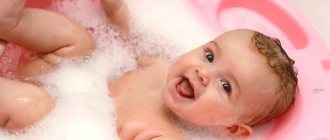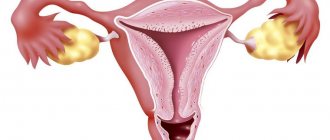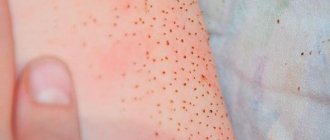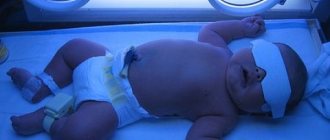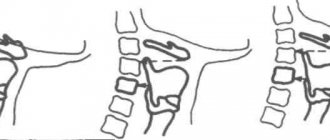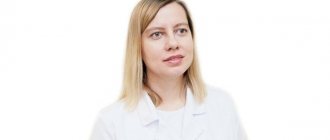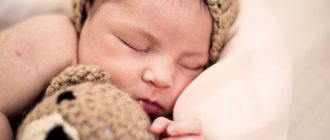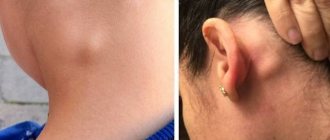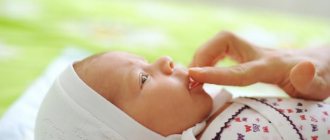What is newborn acne and what causes it?
Between two and five weeks of age, small pimples may appear on your baby's face (usually on the cheeks, nose, eyelids, chin and/or forehead). According to statistics, acne of newborns (or infant acne, neonatal pustulosis) occurs in 30% of babies. Experts do not agree on why acne occurs, but it may be due to one of the following reasons:
- inflammation of the skin caused by fungi of the genus Melassezia, which are part of the normal human microflora and colonize the skin in the first weeks after birth
- overactive sebaceous glands on the baby’s skin, caused by the specific action of maternal hormones (androgens)
Pimples on a newborn's face have nothing in common with acne in teenagers.
Rashes all over the body
- Disturbance of intestinal microflora. In addition, the color of the stool also changes, constipation or diarrhea appears, bloating occurs, and colic becomes more frequent. The blisters may be purulent. Most often located on the baby's bottom.
- Rubella. This disease is characterized by flat pimples that quickly localize throughout the body.
- Large red rashes may appear due to eczema, which either recedes or returns. Such pimples flake and cause itching, resulting in the formation of a crust on their surface.
- Scabies. Sometimes a baby develops scabies, rashes that appear on the entire surface of the body except the back. It is characterized by an itchy cluster of crusty pimples. Most blisters form on the hands.
Children develop white rashes.
If the rash is covered with a white crust, it may be the following formations.
- Comedones are narrow and shiny papules with a yellow or white tint. They do not pose any harm to the baby and pass quickly.
- Milia. Such irritations are not accompanied by inflammation. They resemble wen in appearance. Such white pimples do not need to be treated, as they go away when the baby’s sebaceous glands normalize.
How to get rid of acne in newborns
There are no home remedies to get rid of newborn pimples on the face. You need to wait until they disappear on their own. Typically, newborn acne goes away in about three to four months without leaving any traces. Here's how to take care of your baby's delicate skin if he has pimples:
- Wash him every day with warm water and mild baby soap, then pat dry.
- Try to avoid any rubbing of the affected areas of the skin, as this can make the process worse or even lead to infection.
- Do not apply lotions or oils to your baby's face.
- There is no need to follow a diet, since neonatal acne has nothing to do with the mother’s diet
When will it pass?
Childhood acne will most often go away on its own. Doctors do not recommend resorting to serious methods of therapy for mild forms of rashes. They disappear after the mother's hormones are completely eliminated from the infant's body. It is necessary that the baby’s hormonal system also returns to normal.
Recovery usually occurs within 2-3 weeks. Less often it takes 1.5 months. Acne does not leave marks on a child's skin unless parents try to squeeze out the pimples.
When to see a doctor
If you are concerned about your baby's complexion or if you are concerned that the condition is not improving after three to four months, consult your pediatrician. Your doctor may prescribe a special cream to treat acne in a newborn. Do not use over-the-counter creams or any other medications for acne without first consulting your pediatrician as they may harm your baby. Contact your pediatrician if your newborn has any of these symptoms:
- blisters on the skin
- peeling skin
- heat
- uncharacteristic tearfulness
- poor appetite
Can a baby develop pimples on his face as a result of infections?
What does acne on a child's face mean when he is 1 year after birth? First, about possible infections in the body in the form of scarlet fever, rubella, smallpox. For any of the listed ailments, certain types of rashes are characteristic. If pimples of unknown etiology are found on a newborn’s face and body, it is important to immediately consult a specialist. Self-medication is not recommended. A doctor should prescribe treatment based on the identified infection.
The causative agents of the formation of such lesions as small pimples on the face of a baby are often skin infections. They become streptococci, staphylococci, and other microbes.
Expert advice
In order for pimples on a newborn’s face to go away faster or not appear at all, according to Ulyana Leonidovna Kashkarova, a dermatologist at the Moscow Medical Center, it is necessary to adhere to a number of rules:
- appropriate diet;
- remove harmful foods for the baby from the diet of a nursing mother;
- serious attitude towards child hygiene - morning and evening washing are mandatory;
- Avoid overly wrapping your baby by dressing your baby according to the season;
- See a doctor if suspicious rashes occur.
Compliance with all of the above recommendations and competent consultation with the qualified help of a doctor lead to the fact that pimples on the face of a newborn do not appear or disappear in the shortest possible time without harm to the small organism.
Acne of non-infectious nature
So, if a child has rashes, most often they are the result of the following diseases:
Prickly heat
Miliaria is characterized by small red pimples, possibly pink, that are found in the folds of the neck, armpits, groin and buttocks. At the initial stage, they do not cause any discomfort to the baby, but if nothing is done, the pimples merge into single red spots, the skin takes on an inflamed appearance, and crusts may form. At this stage, the child tries to comb problem areas, which gives him even more discomfort.
READ ALSO: Wen behind the ear: causes and how to get rid of it at home
The principles of treating prickly heat can be understood by understanding the causes of its occurrence. When a baby is dressed too warmly (outside or at home), he, like any other person, begins to sweat and his skin becomes wet. And since toddlers in the first year of life are usually plump and have folds on their body, their delicate skin is more susceptible to friction and redness. Therefore, the affected areas need to be dried. It is also necessary to relieve inflammation.
If a similar rash appears without visible signs of illness, it is most likely prickly heat and the child is simply overheating
This is done using special ointments based on zinc or other components, for example, you can buy Desitin, Drapolene, Zinc paste. And, of course, you need to keep your skin clean, let it breathe, regularly carry out water treatments (for prickly heat, you can take baths with a weak solution of potassium permanganate) and maintain a cool and humid microclimate in the house. To prevent your child from scratching himself, you need to trim his nails regularly.
Untreated prickly heat is fraught with the addition of a secondary infection, since the protective barriers of the skin become weak. So, if the skin gets a staphylococcal or streptococcal infection, vesiculopustulosis can develop. In severe cases, it is necessary to treat not only the external manifestation of the disease, but also take antibacterial drugs internally as prescribed by the doctor.
Allergic diathesis
Diathesis is a predisposition to something, and in our case to allergic manifestations. When they say that a baby has diathesis, this means that his body is prone to developing allergies if a triggering factor arises. Against the background of diathesis, atopic dermatitis often develops in the first year of life.
Atopic pimples are small and look like red spots. They are localized mainly on the bends of the elbows, knees, dorsums of the hands, and feet. Redness can also be on the forehead, cheeks and temples, on the head and behind the ears. Quite often there are so many acne on the face that they even appear under the eyes.
We recommend reading: Causes of rash on the face of a baby
Any potential allergen can trigger the appearance of atopic dermatitis:
- allergenic products, especially during the period of introducing complementary foods (eggs, honey, nuts, fish);
- synthetic clothing;
- household chemicals, cosmetics for newborn care;
- cow's milk protein (with artificial feeding with milk formulas);
- dust mite;
- pet fur.
Typically, children with atopic dermatitis have fairly dry skin. Therefore, in treatment it is imperative to use professional cosmetics that restore the lipid layer and help moisturize the skin. In severe cases, short-term application of hormonal ointments to the affected areas, taking antihistamines, sorbents and calcium are indicated. An important role in recovery is played by the prescription of a diet for the mother, if the baby is breastfed, and for the child, if he is already receiving complementary foods.
Type and favorite places of atopic dermatitis
In the acute form, bathing is undesirable: baths are recommended no more than once a week. The rest of the time, you can use wet hypoallergenic wipes or wash the child under running water to cleanse the skin. If desired and with the permission of a doctor, you can add a decoction of yarrow, nettle, and burdock root to the water. But chamomile and string are not everyone’s favorite, as they dry out the skin.
Dermatitis due to food allergies
- Symptoms
An allergic reaction to various foods can be accompanied by the development of edema, the appearance of rashes on the skin in the form of blisters, red spots, rashes in the form of pustules and papules with serous contents, often itching. These symptoms usually occur within minutes to hours after eating the allergen. In addition to skin damage, nausea, diarrhea, and manifestations of hypersensitivity reactions from the respiratory tract are possible. In very young children, food allergies are sometimes accompanied by diaper rash in the folds of the limbs, eczema, and increased dryness or, on the contrary, moisture of the skin.
- Treatment
To treat skin breakouts, you must first follow an elimination diet. In this case, the product that presumably causes a specific reaction is excluded from the diet (in children in the first year of life, most often cow’s milk protein). Local anti-inflammatory therapy using creams and ointments is used as needed. Modern antihistamines are also often recommended to relieve symptoms. Additionally, sedatives can be used (as prescribed by a doctor).
If a child has a food allergy, the doctor may recommend that the child and mother follow a diet (reduce or eliminate milk and dairy products from the diet) if she is breastfeeding.
Formula-fed children need medicinal formulas based on highly hydrolyzed (broken-down) proteins, which do not cause allergies and help normalize the function of the gastrointestinal tract. For example, Nutrilak Peptide MCT , which also contains such important components as omega-3 and omega-6 fatty acids, nucleotides and a balanced vitamin and mineral complex, is recommended for allergies to cow's milk protein and food allergies.
Children are also bottle-fed, but to prevent allergies or for mild manifestations of allergies (taking into account the causally significant allergen and in agreement with the doctor), there are special hypoallergenic mixtures, for example Nutrilak Hypoallergenic . This mixture contains lactobacilli L.Rhamnosus LGG ® - a probiotic with proven effectiveness in the prevention and treatment of atopic dermatitis and eczema in infants. Nutrilak Hypoallergenic contains hydrolyzed protein, as well as bifidobacteria BB-12, which enhance the effect of the probiotic and help improve the balance of microflora.
